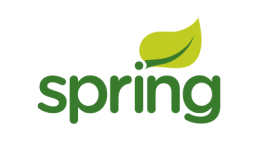Google Web Toolkit
Es un framework que permite crear aplicaciones web similares a aplicaciones de escritorio; posee componentes (controles) muy parecidos a los que tiene Java Swing:
1. TextBox
2. ListBox
3. Image
4. Tree
5. Grid
6. Window
7. Etc.
GWT compila el código Java y lo traduce a Javascript y HTML (algo parecido a lo que hace la librería dwr.jar).
GWT y los IDEs
Creo la mejor forma de usar este framework es con ayuda de un IDE como NetBeans y/o Eclipse, existen plugins para ambos y según yo no son difíciles de configurar.
¿Qué necesito para empezar con GWT?
1. El SDK GWT
2. El plugin (para NetBeans o Eclipse)
3. Librerías gwtext, mejora muchos de los controles de gwt
Ejemplo 1. Un botón que activa una ventana “alert”.
package org.gwtprueba.client;
import com.google.gwt.core.client.EntryPoint;
import com.google.gwt.user.client.Window;
import com.gwtext.client.core.EventObject;
import com.gwtext.client.widgets.Button;
import com.gwtext.client.widgets.event.ButtonListenerAdapter;
/**
* @author yo
*/
public class testGWTEntryPoint implements EntryPoint {
public void onModuleLoad() {
Button btnActiva=new Button();
btnActiva.setText("Activar mensaje");
btnActiva.addListener(new ButtonListenerAdapter(){
@Override
public void onClick(Button btn, EventObject ev){
Window.alert("Bienvenido usuario");
}
});
RootPanel.get().add(btnActiva);
}
}
Ejemplo 2. Crear un ejmeplo básico de GWT RPC
Automáticamente se generan 4 archivos java: GWTService.java, GWTServiceAsync.java, GWTServiceImpl.java y GWTServiceUsageExample.java (este es el archivo principal).
GWTService.java
package org.prueba.client;
import com.google.gwt.user.client.rpc.RemoteService;
public interface GWTService extends RemoteService{
public String myMethod(String s,Integer e);
}
GWTServiceAsync.java
package org.prueba.client;
import com.google.gwt.user.client.rpc.AsyncCallback;
public interface GWTServiceAsync {
public void myMethod(String s,int e, AsyncCallback callback);
}
GWTServiceImpl.java
package org.prueba.server;
import com.google.gwt.user.server.rpc.RemoteServiceServlet;
import org.redalyc.client.GWTService;
public class GWTServiceImpl extends RemoteServiceServlet implements
GWTService {
public String myMethod(String s,int e) {
// Do something interesting with 's' here on the server.
return "Hola: " + s+" tienes "+e+" años";
}
}
GWTServiceUsageExample.java
package org.prueba.client;
import com.google.gwt.core.client.GWT;
import com.google.gwt.user.client.rpc.AsyncCallback;
import com.google.gwt.user.client.rpc.ServiceDefTarget;
import com.google.gwt.user.client.ui.Button;
import com.google.gwt.user.client.ui.ClickListener;
import com.google.gwt.user.client.ui.Label;
import com.google.gwt.user.client.ui.TextBox;
import com.google.gwt.user.client.ui.VerticalPanel;
import com.google.gwt.user.client.ui.Widget;
public class GWTServiceUsageExample extends VerticalPanel {
private Label lblServerReply = new Label();
private TextBox txtNombre= new TextBox();
private TextBox txtEdad = new TextBox();
private Button btnSend = new Button("Enviar al servidor");
public GWTServiceUsageExample() {
add(new Label("Introduce tu nombre: "));
add(txtNombre);
add(new Label("Introduce tu edad: "));
add(txtEdad);
add(btnSend);
add(lblServerReply);
// Create an asynchronous callback to handle the result.
final AsyncCallback callback = new AsyncCallback() {
public void onSuccess(Object result) {
lblServerReply.setText((String)result);
}
public void onFailure(Throwable caught) {
lblServerReply.setText("Communicación fallida");
}
};
// Listen for the button clicks
btnSend.addClickListener(new ClickListener(){
public void onClick(Widget w) {
// Make remote call. Control flow will continue immediately and later
// 'callback' will be invoked when the RPC completes.
getService().myMethod(txtNombre.getText(),Integer.parseInt(txtEdad.getText()), callback);
}
});
}
public static GWTServiceAsync getService(){
// Create the client proxy. Note that although you are creating the
// service interface proper, you cast the result to the asynchronous
// version of
// the interface. The cast is always safe because the generated proxy
// implements the asynchronous interface automatically.
GWTServiceAsync service = (GWTServiceAsync) GWT.create(GWTService.class);
// Specify the URL at which our service implementation is running.
// Note that the target URL must reside on the same domain and port from
// which the host page was served.
//
ServiceDefTarget endpoint = (ServiceDefTarget) service;
String moduleRelativeURL = GWT.getModuleBaseURL() + "gwtservice";
endpoint.setServiceEntryPoint(moduleRelativeURL);
return service;
}
}
Ahora falta crear la clase que lo muestre
package org.prueba.client;
import com.google.gwt.core.client.EntryPoint;
import com.google.gwt.user.client.ui.RootPanel;
public class Prog01 implements EntryPoint {
public void onModuleLoad() {
RootPanel.get().add(new GWTServiceUsageExample());
}
}
Página oficial, plugin para Eclipse
Plugin para NetBeans
Blog oficial GWT
SmartGWT
Demo GWT ext
Manual GWT
Manual GWT ext
Libros





















